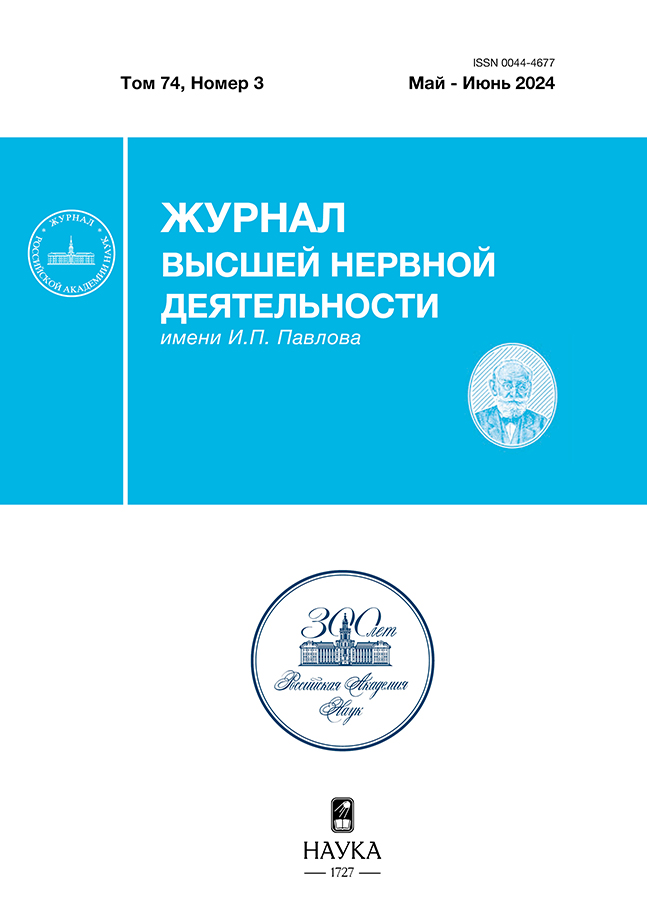Identification of neurophysiological markers of interoceptive signals using the event-related potential technique
- Authors: Slovenko E.D.1, Sysoeva O.V.1,2
-
Affiliations:
- Institute of Higher Nervous Activity and Neurophysiology of RAS
- Sirius University of Science and Technology
- Issue: Vol 74, No 3 (2024)
- Pages: 297-310
- Section: ФИЗИОЛОГИЯ ВЫСШЕЙ НЕРВНОЙ (КОГНИТИВНОЙ) ДЕЯТЕЛЬНОСТИ ЧЕЛОВЕКА
- URL: https://edgccjournal.org/0044-4677/article/view/652089
- DOI: https://doi.org/10.31857/S0044467724030049
- ID: 652089
Cite item
Abstract
The paper is devoted to presentation and assessment of the algorithm for extraction of heartbeat evoked potential (HEP) using the independent component analysis (ICA). The algorithm includes simultaneous recording of electroencephalogram (EEG) and photoplethysmogram (PPG), selection the EEG-epochs, related to the peak of the PPG pulse wave, separation of cardiac and brain activity in the epochs using the independent component analysis (ICA), synchronization the epochs with the R-wave of the cardiogram. Current source density (CSD) transformation was applied to establish the localization of the extracted potential. The algorithm was tested on 21 subjects and revealed a characteristic increase in evoked potential amplitude between 0 and 400 ms after a heartbeat.
Application of independent component analysis and spatial filtering to EEG epochs, synchronized with PPG recording of heartbeat, allows to extract the heartbeat evoked potential, separately from cardiac field artifact.
Full Text
About the authors
E. D. Slovenko
Institute of Higher Nervous Activity and Neurophysiology of RAS
Author for correspondence.
Email: ekaterinaslovenko@gmail.com
Russian Federation, Moscow
O. V. Sysoeva
Institute of Higher Nervous Activity and Neurophysiology of RAS; Sirius University of Science and Technology
Email: ekaterinaslovenko@gmail.com
Russian Federation, Moscow; Sochi
References
- Abtahi F., Seoane F., Lindecrantz K., Löfgren N. Elimination of ECG Artefacts in Fetal EEG Using Ensemble Average Subtraction and Wavelet Denoising Methods: A Simulation. XIII Mediterranean Conference on Medical and Biological Engineering and Computing 2013. 2014. 41: 551–554.
- Azzalini D., Rebollo I., Tallon-Baudry C. Visceral Signals Shape Brain Dynamics and Cognition. Trends in Cognitive Sciences. 2019. 23 (6): 488–509.
- Coll M., Hobson H., Bird G., Murphy J. Systematic review and meta-analysis of the relationship between the heartbeat-evoked potential and interoception. Neurosci Biobehav Rev. 2020. 122: 190–200.
- Dai C., Wang J., Xie J., Li. W., Gong Y., Li .Y. Removal of ECG Artifacts from EEG using an Effective Recursive Least Square Notch Filter. IEEE Access. 2019. 7: 158872–158880.
- MNE/ tutorials/ Repairing artifacts with ICA [сайт]. URL: https://mne.tools/stable/auto_tutorials/preprocessing /40_artifact_correction_ica.html (дата обращения: 17.10.23).
- MNE/tools/preprocessing/ICA [сайт].URL:https://mne.tools/stable/generated/mne.preprocessing.ICA.html
- MNE/tools/preprocessing/Compute_current_source_density https://mne.tools/dev/generated/mne.preprocessing.compute_current_source_density.html
- Montoya P., Schandry R., Müller A. Heartbeat evoked potentials (HEP): topography and influence of cardiac awareness and focus of attention. Electroencephalography and clinical neurophysiology. 1993. 88 (3): 163–172.
- Park H.D., Blanke O. Heartbeat-evoked cortical responses: Underlying mechanisms, functional roles, and methodological considerations. NeuroImage. 2019. 197: 502–511.
- Petzschner F.H., Weber L.A., Wellstein K.V., Paolini G., Do C.T. et al. Focus of attention modulates the heartbeat evoked potential. NeuroImage. 2019. 186: 595–606.
- Pollatos O., Schandry R. Accuracy of heartbeat perception is reflected in the amplitude of the heartbeat-evoked brain potential. Psychophysiology. 2004. 41 (3): 476–482.
- Raimondo F., Rohaut B., Demertzi A., Valente M., Engemann D.A., Salti M. et al. Brain-heart interactions reveal consciousness in noncommunicating patients. Annals of neurology. 2017. 82 (4): 578–591.
- Jammal Salameh L., Bitzenhofer S.H., Hanganu-Opatz I.L., Dutschmann M., Egger V. Blood pressure pulsations modulate central neuronal activity via mechanosensitive ion channels. Science. 2024. 383 (6682).
- Soghoyan G., Ledovsky A., Nekrashevich, Martynova M., Polikanova O., Portnova I., et al. A Toolbox and Crowdsourcing Platform for Automatic Labeling of Independent Components in Electroencephalography. Frontiers in neuroinformatics. 2021. 15: 720229.
- Terhaar J., Viola F.C., Bär K.J., Debener S. Heartbeat evoked potentials mirror altered body perception in depressed patients. Clinical neurophysiology: official journal of the International Federation of Clinical Neurophysiology. 2012. 123 (10): 1950–1957.
- Zaccaro A., Perrucci M.G., Parrotta E., Costantini M., Ferri F. Brain-heart interactions are modulated across the respiratory cycle via interoceptive attention. NeuroImage. 2022. 262: 119548.
Supplementary files
















